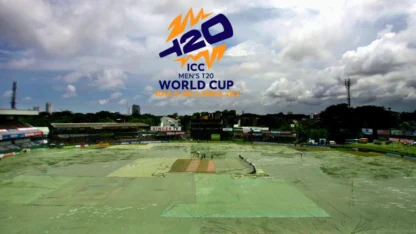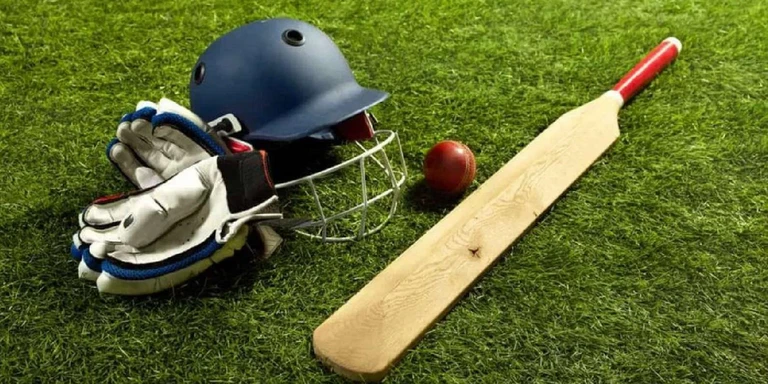Cricket is a sport that thrives on various elements, and among them, cricket pitch stands out as a crucial factor that can influence the outcome of a match. India, known for its diverse climatic conditions, boasts different pitch types across different cricket venues. With World Cup 2023 less than a week away, it is crucial to understand the science behind preparing pitches in different venues.
Notably, The 46-day tournament will feature 48 games, taking place across 10 cities – Ahmedabad, Bangalore, Chennai, Delhi, Dharamsala, Hyderabad, Kolkata, Lucknow, Mumbai and Pune.
With matches set to be played in different regions, fans can expect different behaviour of the pitches due to varied topography and colour of soil.
How cricket pitches are prepared in India?

The process of preparing a cricket pitch in India involves several key steps:
Selection of Soil
The type of soil very crucial process and is picked based on the venue’s characteristics and the desired pitch type.
Type of soil and their impact on behaviour of pitch
In India, generally four types of soils are used to prepare pitches.
Clay Soil (Red Soil): This type of soil is mostly found in the northern and central regions of India. Red soil or clay soil provides slow and low bounce, making them ideal for spinners. The red soil pitch dries quicker and assists in grip and turn, making it a paradise for spin bowlers.

Black Soil: This soil type is predominantly found in the parts of North India. Black soil pitches provides even bounce and are considered “ideal” pitches for cricket as it assists both batters and bowlers.
Sandy Soil: Sandy soil is found in regions with a drier climate, such as Rajasthan and some parts of South India. Pitches prepared with sandy soil tend to be flat and dry, offering little assistance to bowlers. These pitches are batting paradises and produces high-scoring matches.
Yellow Soil: Yellow soil, also called Morrum soil is pale in color and has good binding properties. It helps grass to grow in quick time.
Mixed Soil: Many venues in India use a combination of different soils to prepare pitches, depending on the local conditions and requirements. The Narendra Modi Stadium in Ahmedabad is known for its mixed soil pitch, providing an entertaining cricket action.
Pitch Construction: The chosen soil is spread evenly and compacted to create a solid base. It is then leveled and prepared to the required pitch length.
Grass Management
The next step for preparation of a cricket pitch is the grass management. Groundsmen decide the amount and length of grass on the pitch. More grass aid seam movement, while less grass provides turn.
Rolling and Watering
The pitch is rolled to ensure a consistent surface and then watered to maintain the right moisture levels.
Final Preparations
The pitch is marked, and the creases are cut. The ground staff monitors the pitch’s condition.
Types of Pitches expected in World Cup 2023 venues
1. Arun Jaitley Stadium, New Delhi
The pitches at Arun Jaitley Stadium in New Delhi have used red soil in the past to provide assistance to spinners. However, after strict instructions from ICC to prepare batting friendly surfaces in World Cup, curators have used black soil. The dew will play a big role in the stadium and we can expect few high scoring chases at the start.
2. Wankhede Stadium, Mumbai
The pitch of Wankhede uses Mumbai’s rich quality clay soil, which provides some movement, bounce, turn and lots of runs under the lights, making it a perfect pitch for a cricket match.
3. M A Chidambaram Stadium, Chennai
The pitch traditionally have assisted spinners. The surface is created using mixture of clay and red soil which will help batters as well. However, dew once again be a heavy factor at this venue and we might see some anti-dew chemicals during the game.
4. Narendra Modi Stadium, Ahmedabad

Narendra Modi Stadium is a mixed soil surface. The mighty ground has 11 strips; five of local black soil, while the other five are combination of red soil, yellow soil, and local black soil. The other strip is mixture of 75 per cent red soil and 25 per cent black soil. The surface is expected to support batters.
5. Eden Gardens, Kolkata
Four out of the nine pitches are made of black cotton soil and is likely to produce a balanced wicket during World Cup.
6. MCA International Stadium, Pune
Contrary to Mumbai’s Wankhede, Pune’s MCA Stadium uses black soil to provide more bounce and even contest between bat and ball.
7. M Chinnaswamy Stadium, Bengaluru
The red-soil pitches produce run-scoring opportunities . The 5 matches will be played on 3 pitches, while 4th pitch is on stand-by.
8. Himachal Pradesh Cricket Association Stadium, Dharmshala
The pitches at the HPCA Stadium have traditionally favoured the swing bowlers. The black soil gives the pitches a true bounce.
9. Rajiv Gandhi International Cricket Stadium, Hyderabad
Rajiv Gandhi International Cricket Stadium is the only venue which will host only 3 matches in World Cup. The first warm-up game between Pakistan and New Zealand produced a high scoring encounter. It traditionally uses black soil.
10. Ekana Stadium, Lucknow
The pitch at Ekana Stadium underwent renovation after producing poor wickets in IPL 2023. The new surface consists coarse soil, an intermediate layer, and an top layer of clay to produce good batting wickets.
Editor's Pick
 Cricket
ICC to continue with T20 World Cup 2026 matches in Sri Lanka as planned despite Cyclone Ditwah
Cricket
ICC to continue with T20 World Cup 2026 matches in Sri Lanka as planned despite Cyclone Ditwah






















































